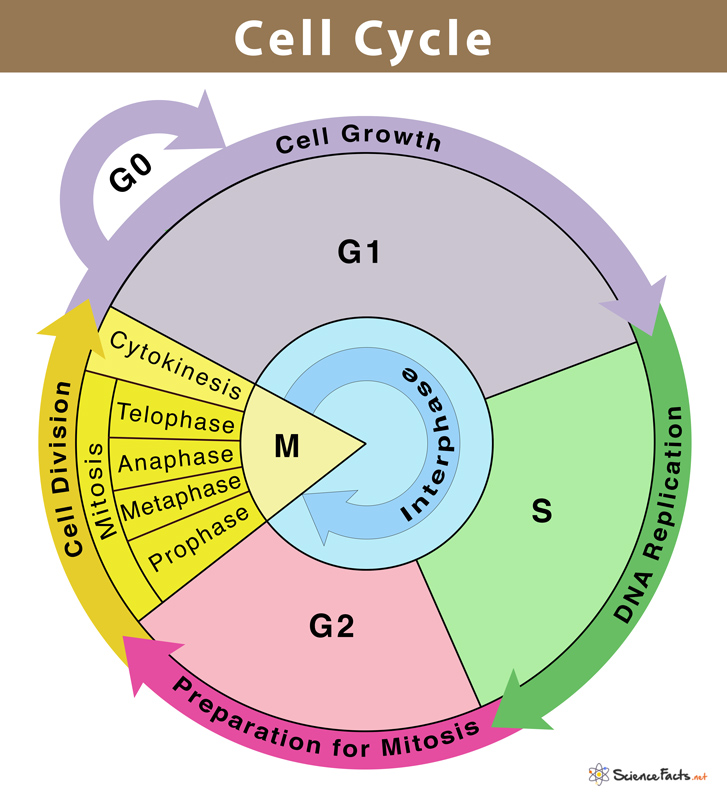
The Cell Cycle (The Living Cell)
Learning Outcomes At the end of this session students should be able to: Describe the phases of the cell cycle Describe the key events occurring during M phase Understand mitotic versus meiotic cell division Understand how the cell cycle is controlled in yeast compared to higher eukaryotes
-
The cell cycle involves what? (2)
• Duplication of cell contents: DNA,organelles, cytoplasm• Division into two new daughter cells
-
For Unicellular organisms, such as bacteria or yeast: each cell cycle gives rise to how many organisms? and what about multicellular organisms?
Unicellular organisms:
2
Multicellular organisms, such as humans:-single-celled zygote must undergo many rounds of the cell cycle tomake a new fully grown organism-must also constantly replace any cells that die during the lifetime of the organism
-
Picture outlining the phases of the cell cycle:
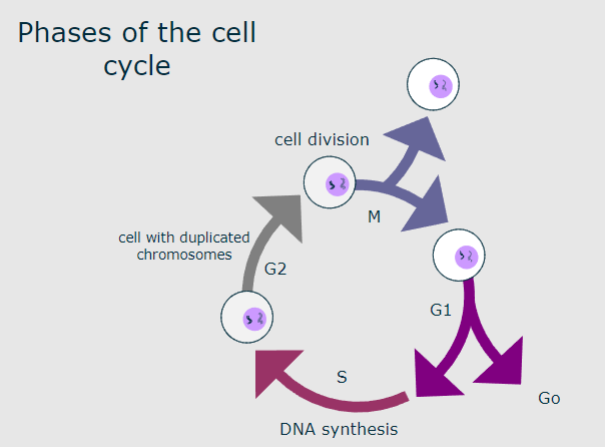
G0-Resting phase. No cell division is taking place
-
Many cells in our body are in what phase? Elaborate
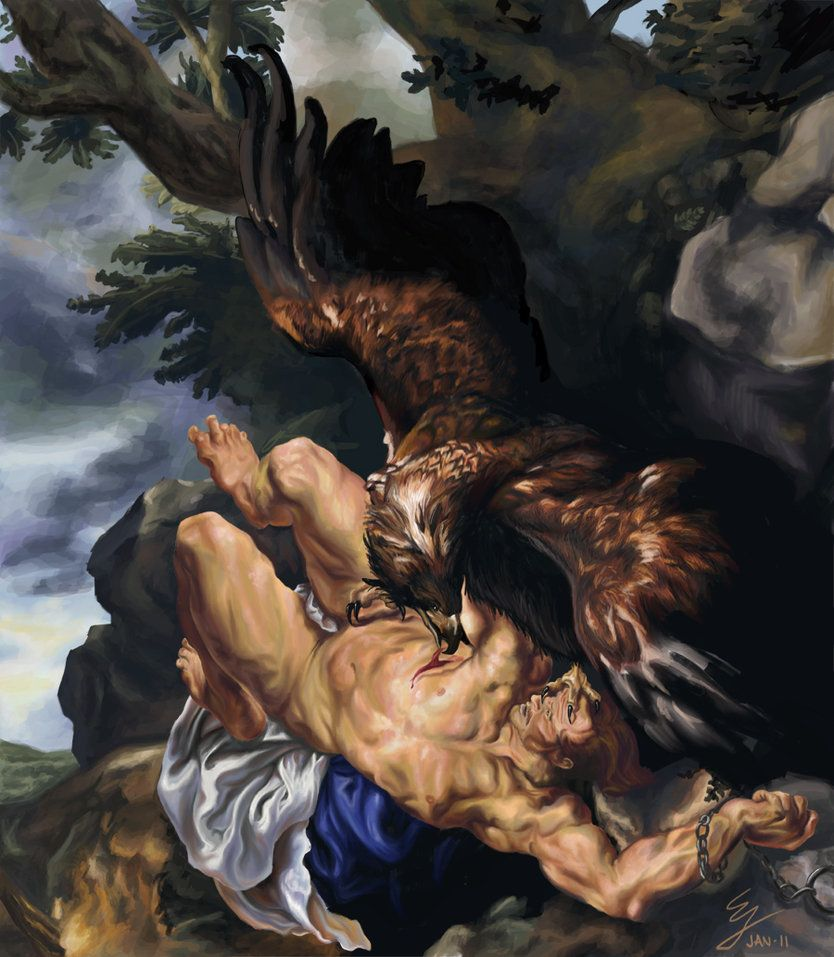
G0
As a result, not all can re-enter the cell cycle
• For some cells.....Cell cycle re-entry not possible, e.g. nerve cells
• Some cells are..... Maintained in Go unless stimulated to divide, e.g. hepatocytes
• Some cells are.... Constantly in the cell cycle, e.g. epithelial cells of the gut
-
What is the G1,S,G2 and M phases? (short answers)
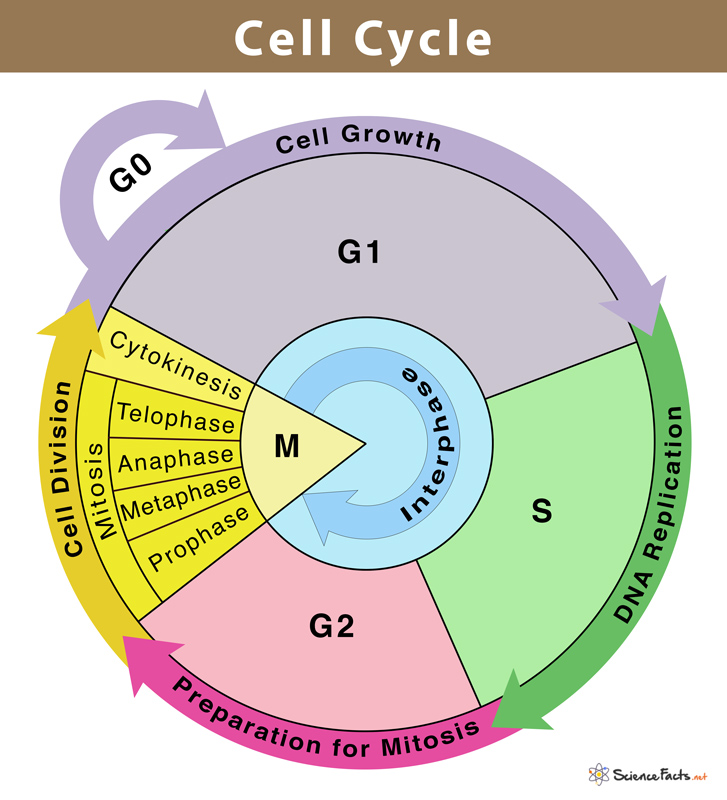
• G1= Gap 1 phase: growth and preparation for S phase• S = Synthesis phase: chromosome duplication• G2= Gap 2 phase: growth and preparation for M phase• M = Mitotic phase: mitosis and cytokinesis
-
Mitosis consists of what steps?
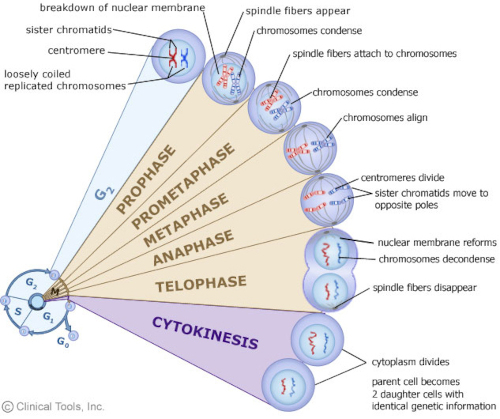
• Prophase• Prometaphase• Metaphase• Anaphase• Telophase• Cytokinesis
-
What is Prophase?
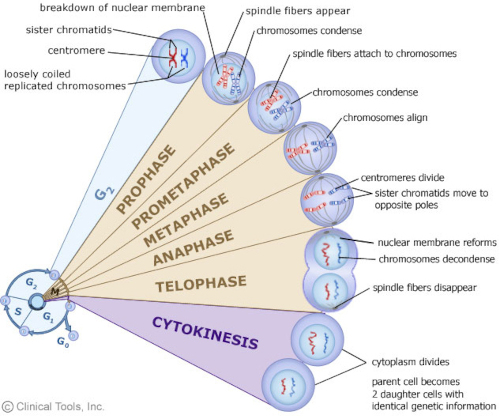
Prophase: chromosomes condense, centrosomes move to opposite poles, mitotic spindle forms
-
What is Prometaphase?
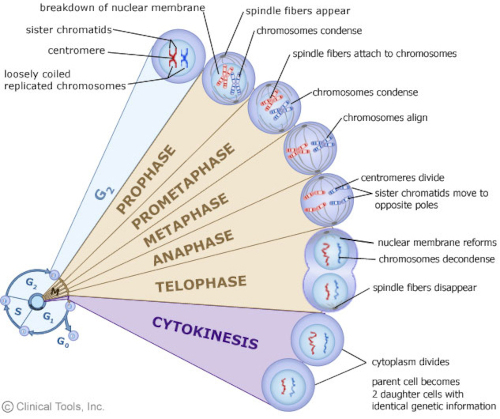
Prometaphase: breakdown of nuclear envelope, chromosomes attach to mitotic spindle
-
What is Metaphase?
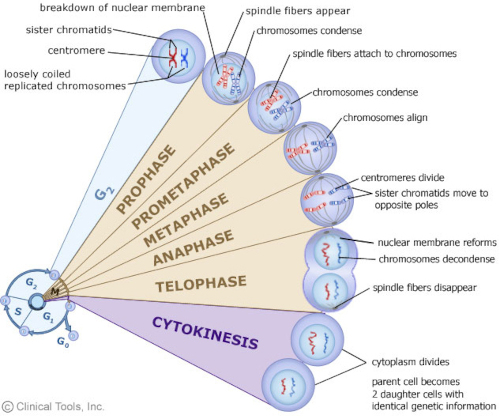
Metaphase: centrosome are at opposite poles, chromosome are at their most condensed and line up at the equator of the mitotic spindle
-
What is Anaphase?
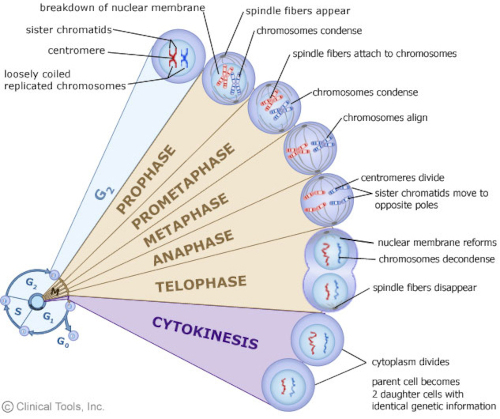
Anaphase: sister chromatids separate synchronously, each new daughter chromosome moving to the opposite spindle pole
-
What is Telophase?
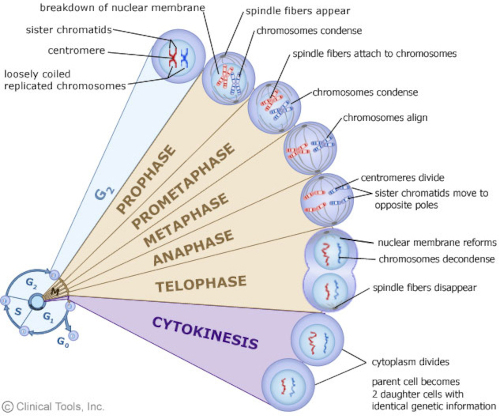
Telophase: chromosome arrives at the spindle poles, chromosomes decondense, nuclear envelope reforms
-
What is Cytokinesis?
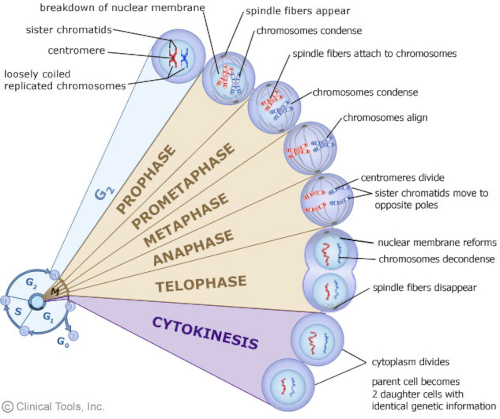
Cytokinesis: cytoplasm divides at the position of the metaphase plate. Contractile ring of actin and myosin II constrict the cell into two new cells via cleavage furrow
-
State some information about the mitotic spindle-The microtubule machine
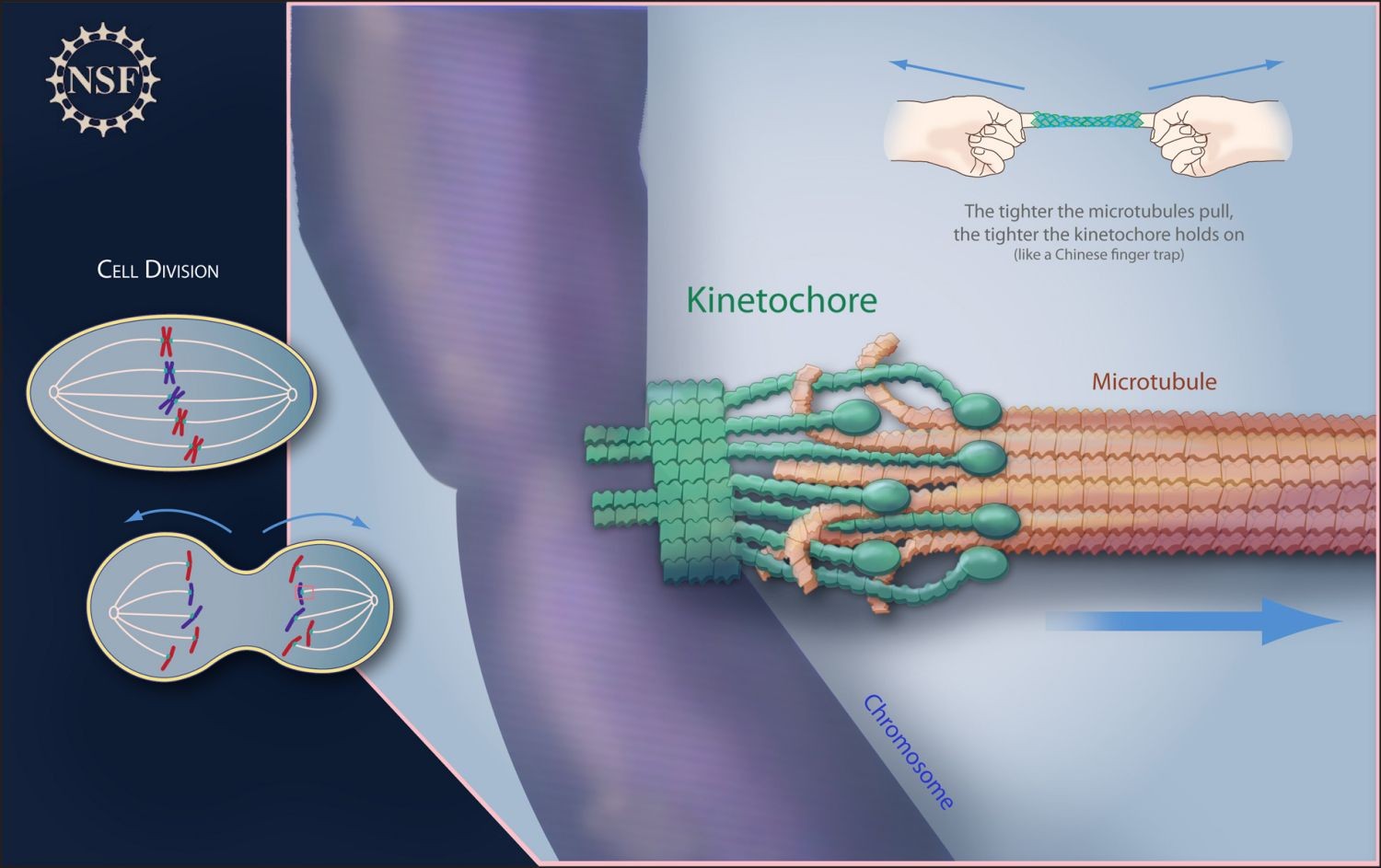
• Starts to assemble during prophase from the centrosomes• Function: separate the duplicated chromosomes• Constructed from microtubules
• 3 types of spindle microtubules+ astral microtubules+ kinetochore microtubules+ interpolar microtubules
• Chromosomes attach to the spindlevia the kinetochore –(a proteincomplex assembled on thecentromere)
-
What is the centrosome?
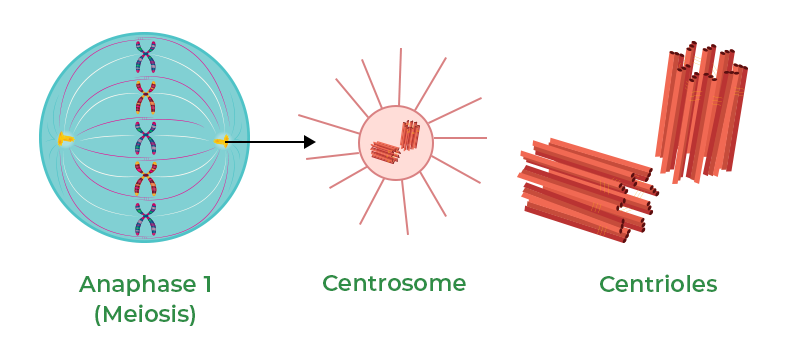
-An organelle near the nucleus of a cell which contains the centrioles (in animal cells) and from which the spindle fibres develop in cell division.
-
State some information about the Centrosome cycle:
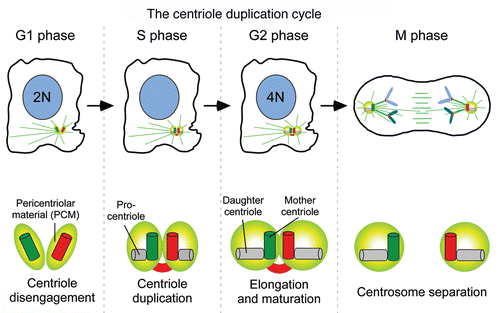
• microtubule-organizing centre in animal cells• centrosome consists of a pair of centrioles surrounded by pericentriolar material• duplicated during interphase• migrate to opposite poles in preparation for M phase
-
Cell organelles cannot spontaneously regenerate, so must be present in.....?
The new daughter cells
-
State some information about Meiosis:
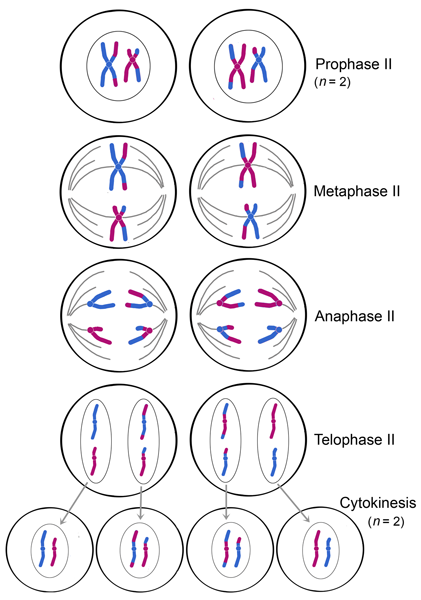
• Meiosis is a specialised cell division that starts with one diploid cells and ends with 4 haploid cells• Purpose is to produce gametes: sperm and egg
• One round of DNA replication during S phase and two rounds ofcell division- in meiosis I homologous chromosomes line up on the spindle and separate to opposite spindle poles- in meiosis II, sister chromatids line up on the spindle andseparate to opposite spindle pole
• Recombination occurs between homologous chromosomes
-
What are the differences of Mitosis and Meiosis?
Mitosis:• two cells• one round of cell division• diploid• no recombination
Meiosis:• four cells• Two rounds of cell division• haploid• recombination
-
When meiosis goes wrong, nondisjunction occurs; What is nondisjunction?
• nondisjunction- failure of homologues to separate from one another, either at meiotic division I or meiotic division II
-
What is an autosome? When nondisjunction occurs, is it fatal? (name at least one exception)
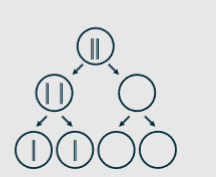
An autosome is one of the numbered chromosomes, as opposed to the sex chromosomes.
• autosomes-usually fatal, exceptions are:
• trisomy 21 Down’s Syndrome
• trisomy 18 Edward’s syndrome
• trisomy 13 Patau Syndrome
-no viable autosomal monosomies
-
List some examples of Sex chromosomes that can have non-disjunction events
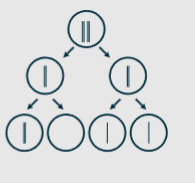
• sex chromosomes:• XO Turner's syndrome• XXX Triple X• XXY Klinefelter's syndrome
-
How is the cell cycle generally regulated?
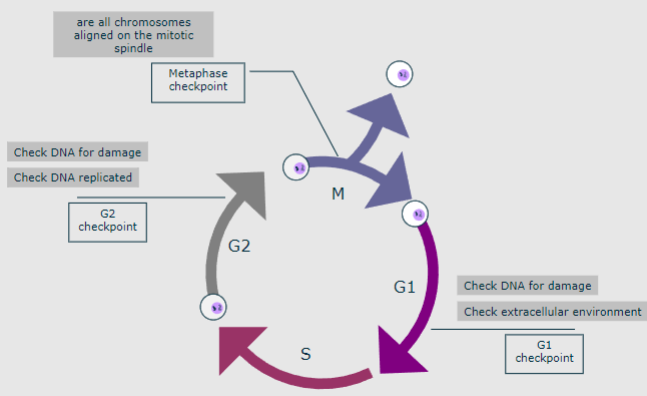
• Entry into the cell cycle must be strictly controlled• Each phase must occur only once per cell cycle
• Phases must be in the correct order• G1-S-G2-M• Phases must be non-overlapping
-
What are the 2 cell cycle regulators? Elaborate on them slightly:
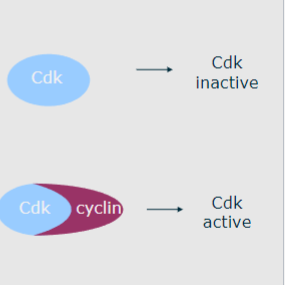
-Cyclin dependent kinases (Cdks)
o active when bound to a cyclino phosphorylates target proteins
-Cyclins
o different cyclins produced ateach phase of the cell cycle
-
Picture outlining cell cycle control in yeast:
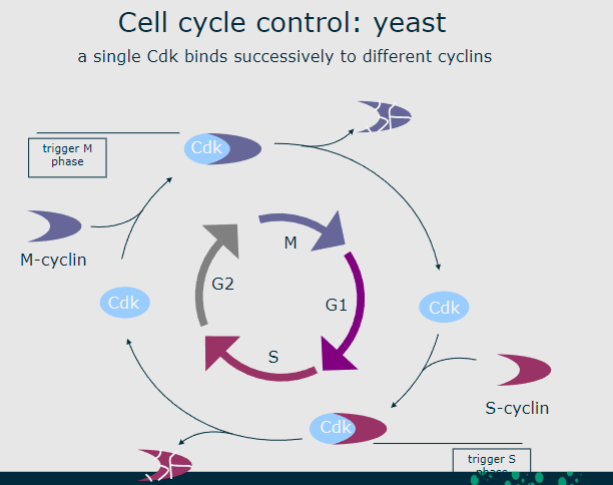
-
Picture outlining cell cycle control in humans:
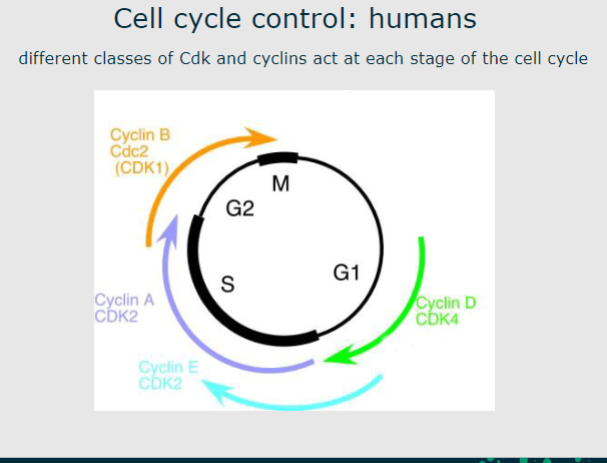
-
What are the 5 basic principles of cell cycle control?
• Cdk levels, fairly stable throughout the cell cycle
• Cyclin levels vary as part of the cell cycle
• Cdk bound to cyclin is active and can phosphorylate target protein
• Cdk activation triggers the next step in the cell cycle such as entry into S phase, M phase
• Cyclin degradation terminates Cdk activity
-
What is Neoplasia? Elaborate on this:
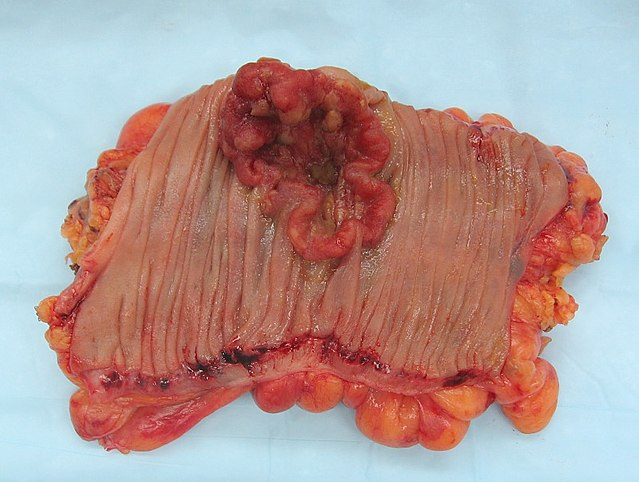
Neoplasia-is the uncontrolled, abnormal growth of cells or tissues in the body
• Cells escape normal cell cycle regulation - no barriers to prevent uncontrolled progression through the cell cycle
• Many genes mutated in human cancers are regulators of the cellcycle such as p53 and pRB, known as tumour suppressor genes

